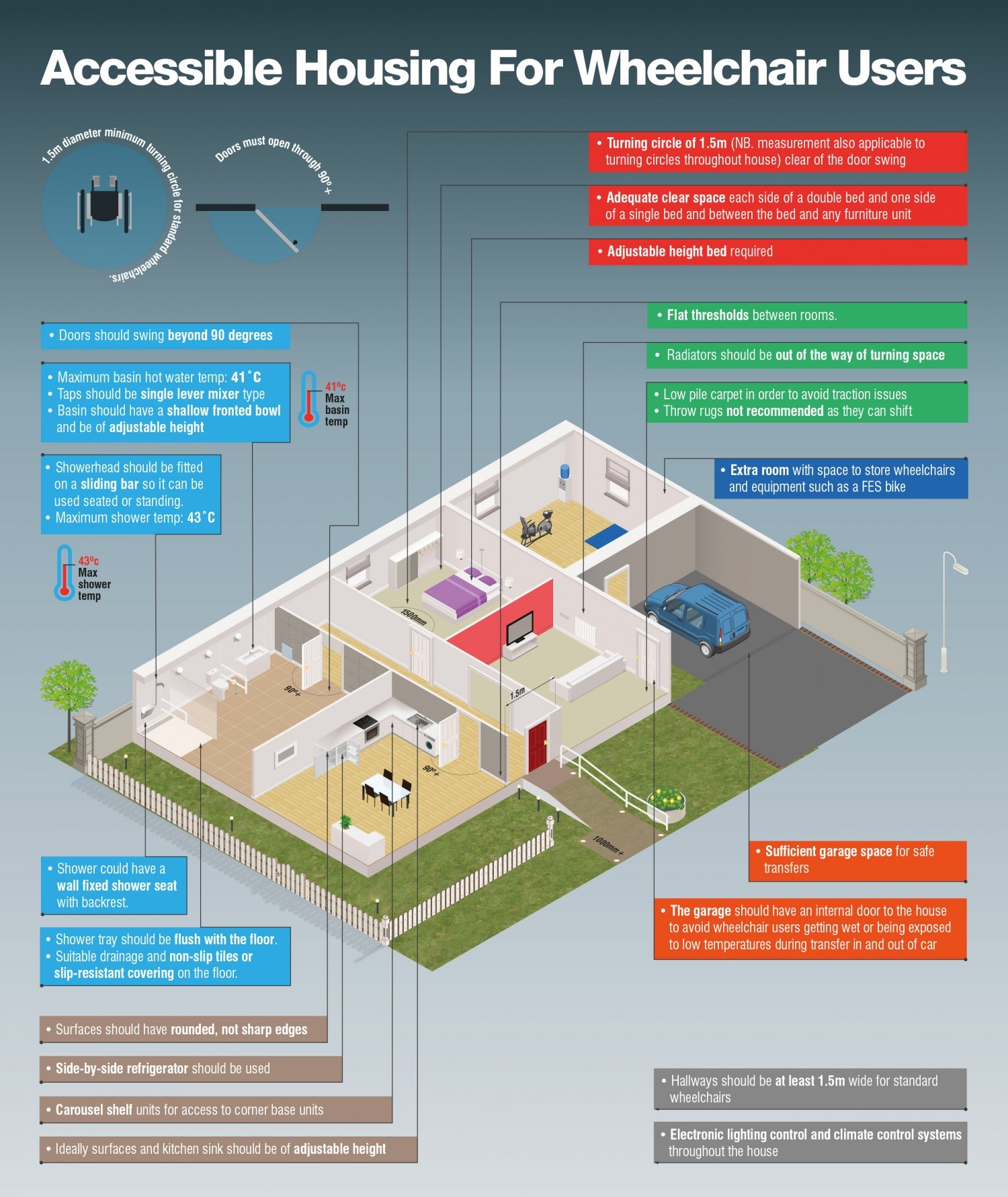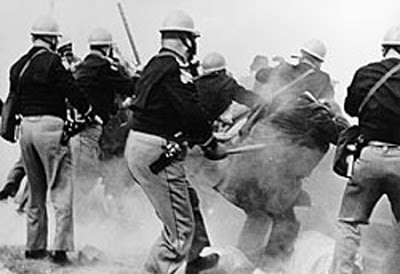|
Discrimination In Awarding Section 8 Housing
Discrimination in awarding Section 8 housing describes alleged or confirmed cases of illegal discrimination in the housing market of the United States of America, " Section 8" being a portion of a 1937 law that provides financial assistance for housing costs of several million low-income Americans. Advocates for individuals who have been unfairly denied usage of their housing voucherargue that "racial and economic segregation" in Section 8 housing is "a major problem." In 1968, Congress enacted the Fair Housing Act (FHA) as Title VIII of the Civil Rights Act of 1968 to combat racial segregation. In 1974, to further combat the concentration of poverty and racial segregation in housing, the government developed the Section 8 Housing Voucher Program (now known as the Housing Choice Voucher Program), which supplies vouchers to low-income tenants to assist with rental payments. However, despite receiving vouchers to help with rental payments, participants in the program are said to ... [...More Info...] [...Related Items...] OR: [Wikipedia] [Google] [Baidu] |
Section 8 (housing)
Section 8 of the Housing Act of 1937 (), often called Section 8, as repeatedly amended, authorizes the payment of rental housing assistance to private landlords on behalf of low-income households in the United States. Fort Lauderdale, Florida Housing Authority Director William H. Lindsey, upon the advice of Housing Authority attorney J. Richard Smith, initially developed 11(b) financing in the early 1970s to accommodate a local savings and loan interested in assisting with urban renewal projects Lindsey eventually brought to fruition. This was the initial impetus for the subsequent development of the now well known Section 8 Program. Of the 5.2 million American households that received rental assistance in 2018, approximately 2.2 million of those households received a Section 8 Housing Choice Voucher. 68% of total rental assistance in the United States goes to seniors, children, and those with disabilities. The U.S. Department of Housing and Urban Development manages Section 8 prog ... [...More Info...] [...Related Items...] OR: [Wikipedia] [Google] [Baidu] |
Fair Housing Act
The Civil Rights Act of 1968 () is a landmark law in the United States signed into law by United States President Lyndon B. Johnson during the King assassination riots. Titles II through VII comprise the Indian Civil Rights Act, which applies to the Native American tribes of the United States and makes many but not all of the guarantees of the U.S. Bill of Rights applicable within the tribes. (that Act appears today in Title 25, sections 1301 to 1303 of the United States Code). Titles VIII and IX are commonly known as the Fair Housing Act, which was meant as a follow-up to the Civil Rights Act of 1964 (this is different legislation than the Housing and Urban Development Act of 1968, which expanded housing funding programs). While the Civil Rights Act of 1866 prohibited discrimination in housing, there were no federal enforcement provisions. The 1968 act expanded on previous acts and prohibited discrimination concerning the sale, rental, and financing of housing based on rac ... [...More Info...] [...Related Items...] OR: [Wikipedia] [Google] [Baidu] |
Civil Rights Act Of 1968
The Civil Rights Act of 1968 () is a landmark law in the United States signed into law by United States President Lyndon B. Johnson during the King assassination riots. Titles II through VII comprise the Indian Civil Rights Act, which applies to the Native American tribes of the United States and makes many but not all of the guarantees of the U.S. Bill of Rights applicable within the tribes. (that Act appears today in Title 25, sections 1301 to 1303 of the United States Code). Titles VIII and IX are commonly known as the Fair Housing Act, which was meant as a follow-up to the Civil Rights Act of 1964 (this is different legislation than the Housing and Urban Development Act of 1968, which expanded housing funding programs). While the Civil Rights Act of 1866 prohibited discrimination in housing, there were no federal enforcement provisions. The 1968 act expanded on previous acts and prohibited discrimination concerning the sale, rental, and financing of housing based on rac ... [...More Info...] [...Related Items...] OR: [Wikipedia] [Google] [Baidu] |
Freedom Of Association
Freedom of association encompasses both an individual's right to join or leave groups voluntarily, the right of the group to take collective action to pursue the interests of its members, and the right of an association to accept or decline membership based on certain criteria. It can be described as the right of a person coming together with other individuals to collectively express, promote, pursue and/or defend common interests. Freedom of association is both an individual right and a collective right, guaranteed by all modern and democratic legal systems, including the United States Bill of Rights, article 11 of the European Convention on Human Rights, section 2 of the Canadian Charter of Rights and Freedoms, and international law, including articles 20 and 23 of the Universal Declaration of Human Rights and article 22 of International Covenant on Civil and Political Rights. The Declaration on Fundamental Principles and Rights at Work by the International Labour Organizatio ... [...More Info...] [...Related Items...] OR: [Wikipedia] [Google] [Baidu] |
Gentrified
Gentrification is the process of changing the character of a neighborhood through the influx of more affluent residents and businesses. It is a common and controversial topic in urban politics and planning. Gentrification often increases the economic value of a neighborhood, but the resulting demographic displacement may itself become a major social issue. Gentrification often sees a shift in a neighborhood's racial or ethnic composition and average household income as housing and businesses become more expensive and resources that had not been previously accessible are extended and improved. The gentrification process is typically the result of increasing attraction to an area by people with higher incomes spilling over from neighboring cities, towns, or neighborhoods. Further steps are increased investments in a community and the related infrastructure by real estate development businesses, local government, or community activists and resulting economic development, increased a ... [...More Info...] [...Related Items...] OR: [Wikipedia] [Google] [Baidu] |
Housing Discrimination In The United States
Housing discrimination in the United States refers to the historical and current barriers, policies, and biases that prevent equitable access to housing. Housing discrimination became more pronounced after the abolition of slavery in 1865, typically as part of Jim Crow laws that enforced racial segregation. The federal government began to take action against these laws in 1917, when the Supreme Court struck down ordinances prohibiting blacks from occupying or owning buildings in majority-white neighborhoods in ''Buchanan v. Warley''. However, the federal government as well as local governments continued to be directly responsible for housing discrimination through redlining and race-restricted covenants until the Civil Rights Act of 1968. This Act included legislation known as the Fair Housing Act, which made it unlawful for a landlord to discriminate against or prefer a potential tenant based on their race, color, religion, gender, or national origin, when advertising or negotiat ... [...More Info...] [...Related Items...] OR: [Wikipedia] [Google] [Baidu] |
Housing Segregation In The United States
Housing segregation in the United States is the practice of denying African Americans and other minority groups equal access to housing through the process of misinformation, denial of realty and financing services, and racial steering. Housing policy in the United States has influenced housing segregation trends throughout history. Key legislation include the National Housing Act of 1934, the G.I. Bill, and the Fair Housing Act. Factors such as socioeconomic status, spatial assimilation, and immigration contribute to perpetuating housing segregation. The effects of housing segregation include relocation, unequal living standards, and poverty. However, there have been initiatives to combat housing segregation, such as the Section 8 housing program. Racial residential segregation doubled from 1880 to 1940. Southern urban areas were the most segregated. Segregation was highly correlated with lynchings of African-Americans. Segregation lowered homeownership rates for both blacks ... [...More Info...] [...Related Items...] OR: [Wikipedia] [Google] [Baidu] |
Public Housing In The United States
In the United States, subsidized housing is administered by federal, state and local agencies to provide subsidized rental assistance for low-income households. Public housing is priced much below the market rate, allowing people to live in more convenient locations rather than move away from the city in search of lower rents. In most federally-funded rental assistance programs, the tenants' monthly rent is set at 30% of their household income. Now increasingly provided in a variety of settings and formats, originally public housing in the U.S. consisted primarily of one or more concentrated blocks of low-rise and/or high-rise apartment buildings. These complexes are operated by state and local housing authorities which are authorized and funded by the United States Department of Housing and Urban Development (HUD). In 2020, there were 1 million public housing units. Subsidized apartment buildings, often referred to as ''housing projects'' (or simply "the projects"), have a comp ... [...More Info...] [...Related Items...] OR: [Wikipedia] [Google] [Baidu] |
Federal Assistance In The United States
In the United States, federal assistance, also known as federal aid, federal benefits, or federal funds, is defined as any federal program, project, service, or activity provided by the federal government that directly assists domestic governments, organizations, or individuals in the areas of education, health, public safety, public welfare, and public works, among others. The assistance, which can reach to over $400 billion annually,United States Office of Management and Budget; Office of Federal Financial ManagementThe Single Audit is provided and administered by federal government agencies, such as the U.S. Department of Housing and Urban Development and the U.S. Department of Health and Human Services, through special programs to recipients. Definition The term ''assistance'' (or ''benefits'') is defined by the federal government as:2006 CFDA ; "Intr ... [...More Info...] [...Related Items...] OR: [Wikipedia] [Google] [Baidu] |
Discrimination In The United States
Discrimination comprises "base or the basis of class or category without regard to individual merit, especially to show prejudice on the basis of ethnicity, gender, or a similar social factor". This term is used to highlight the difference in treatment between members of different groups when one group is intentionally singled out and treated worse, or not given the same opportunities. Attitudes toward minorities have been marked by discrimination in the history of the United States. Many forms of discrimination have come to be recognized in American society, particularly on the basis of national origin, race and ethnicity, non-English languages, religion, gender, and sexual orientation. History Racism Colorism is a form of racially-based discrimination where people are treated unequally due to skin color. It initially came about in the United States during slavery. Lighter skinned slaves tended to work indoors, while dark skinned worked outdoors. In 1865, during the Recons ... [...More Info...] [...Related Items...] OR: [Wikipedia] [Google] [Baidu] |






